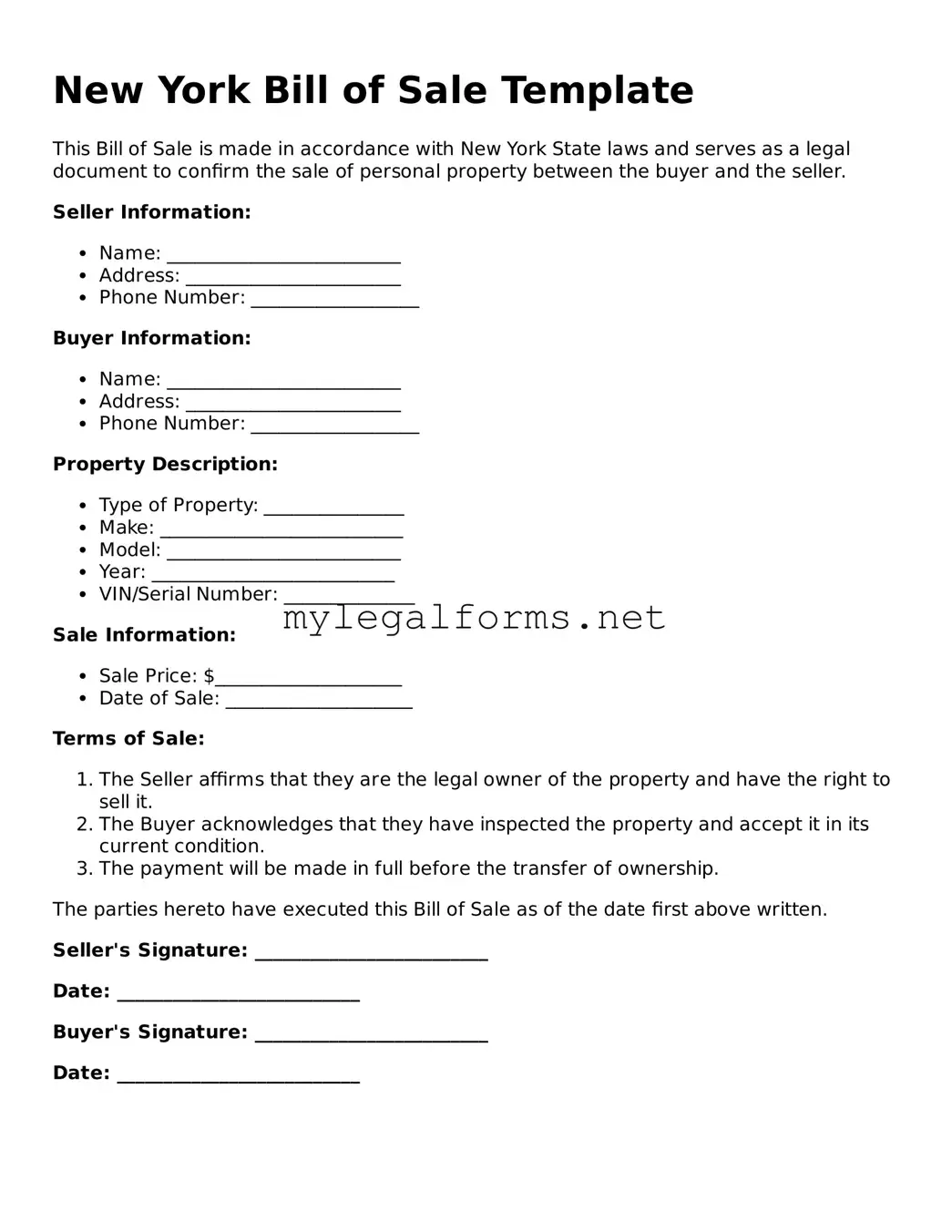When completing the New York Bill of Sale form, individuals often overlook critical details that can lead to complications down the line. One common mistake is failing to provide accurate descriptions of the item being sold. The Bill of Sale should include specific information such as the make, model, year, and condition of the item. Without this information, disputes may arise regarding the transaction, potentially leading to legal challenges.
Another frequent error is neglecting to include the correct names and addresses of both the buyer and the seller. This information is essential for establishing a clear record of the transaction. If any party later claims they were not involved in the sale, having complete and accurate contact details can help clarify the situation. Omitting this information can create ambiguity and complicate future communications.
Many people also fail to date the Bill of Sale. A date serves as a crucial reference point for both parties, indicating when the transaction took place. Without this, it can be difficult to establish timelines for warranties, returns, or any potential disputes that may arise later. This seemingly minor detail can have significant implications.
Another mistake involves not having the document signed by both parties. A Bill of Sale is not merely a formality; it serves as a legal contract. If one party does not sign, it may be difficult to enforce the terms of the sale. Ensuring that both the buyer and seller sign the document solidifies the agreement and protects the interests of both parties.
People often forget to include any applicable warranties or disclaimers in the Bill of Sale. If the seller offers a warranty or if the item is being sold "as is," this should be clearly stated in the document. Failing to outline these terms can lead to misunderstandings and disputes regarding the condition of the item and the responsibilities of both parties.
Additionally, some individuals do not keep a copy of the Bill of Sale for their records. After the transaction is completed, it is crucial for both the buyer and seller to retain a copy of the document. This serves as proof of the sale and can be invaluable if any issues arise in the future. Without a copy, one party may find themselves at a disadvantage if disputes occur.
Lastly, many people overlook the importance of consulting local laws and regulations related to the sale of specific items. Certain items may require additional documentation or adherence to specific legal requirements. Ignoring these regulations can lead to fines or other legal repercussions. It is always wise to ensure compliance with local laws to avoid potential pitfalls.
